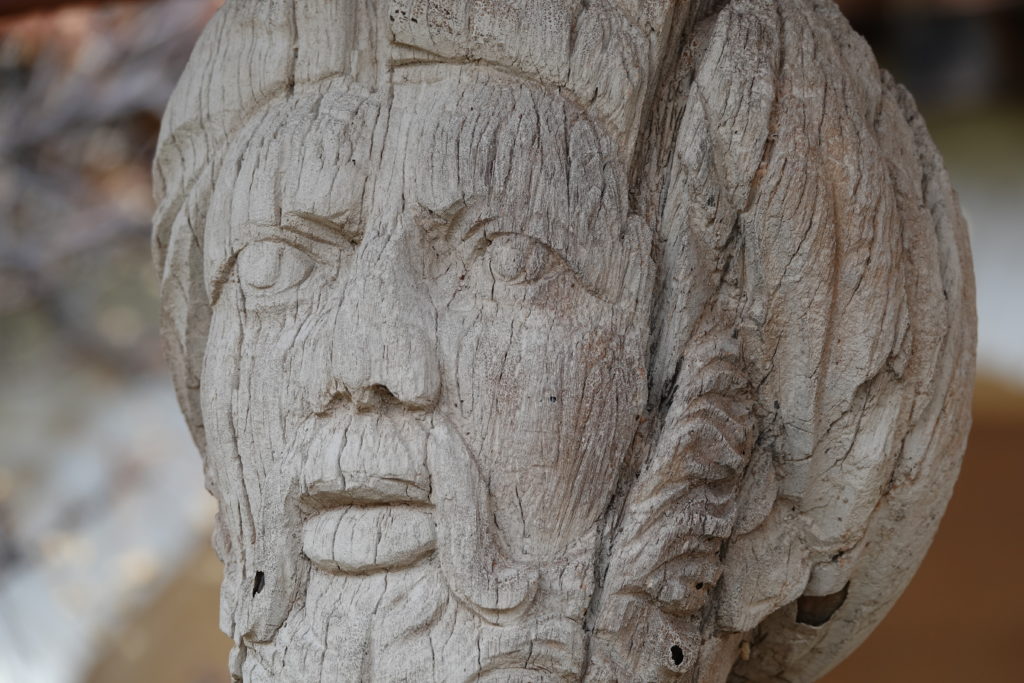Mission Impossible
Heading south today we stopped at two of the original Spanish missions, Mission Nuestra Señora de la Soledad, and Mission San Antonio de Padua. Let’s get the historical background out of the way. Depending on your viewpoint the missionaries were either devout men who were willing to travel to the far side of the world leaving all the comforts of civilization behind in order to spread their faith, or racist imperialist conquerors who enslaved and imprisoned the Native Americans, and kept them in such insanitary conditions that they many of them were killed by diseases brought by the missionaries.
What’s the truth? My view it that it is both, and that the piety of the missionaries does not excuse the beginnings of the genocide of the Native Californians. Of course, things got much worse when California became part of the United States. The first bond issue made by the fledgling State of California was to fund militias to kill Native Americans, and to pay a bounty for every Native American that was killed. Those that weren’t shot were rounded up into slave labor camps. California has a shameful past that nobody is willing to talk about.
The mission period did not actually last very long. They were set up by the Spanish from 1769 to 1804. Then Mexico (which included California) became independent from Spain in 1821, and in 1833 the Mexican government took the land away from the missions and gave it to senior generals and political cronies. The missions were abandoned and while some remained as churches other fell into ruins. The Soledad mission became a ranch house. By the 20th Century most of them were rebuilt and restored.
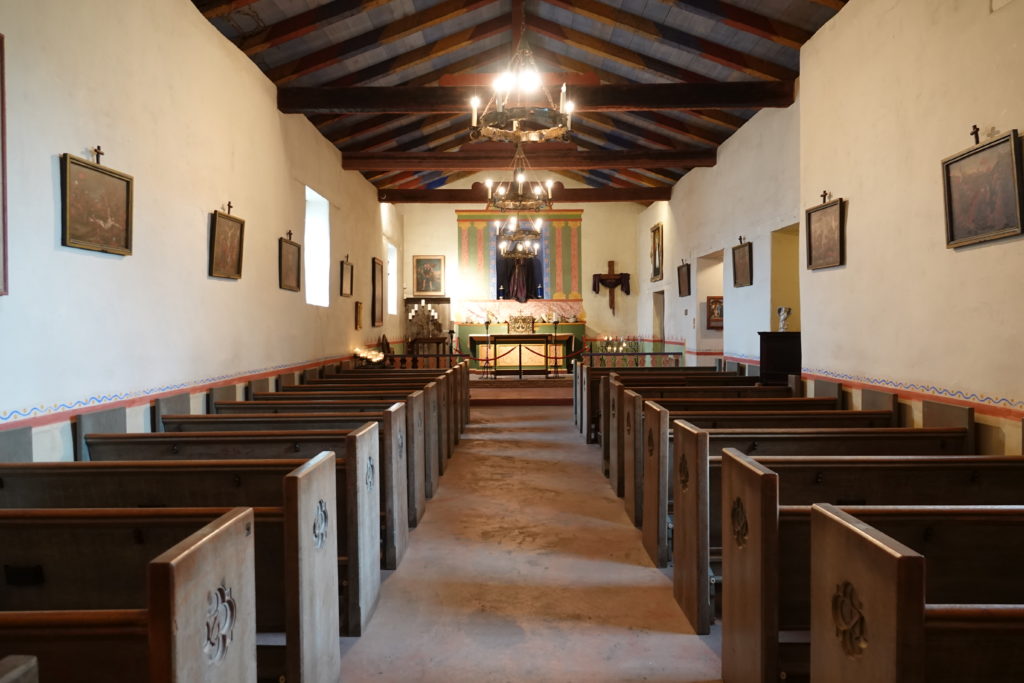
This is not the original church at Soledad, as that was destroyed by flooding, but another building that was converted to a chapel. The remains of the ranch house are now a museum with artifacts from the Native Americans, missionaries and ranchers.
This is a finely woven basket use for winnowing, that is separating seeds and stems.
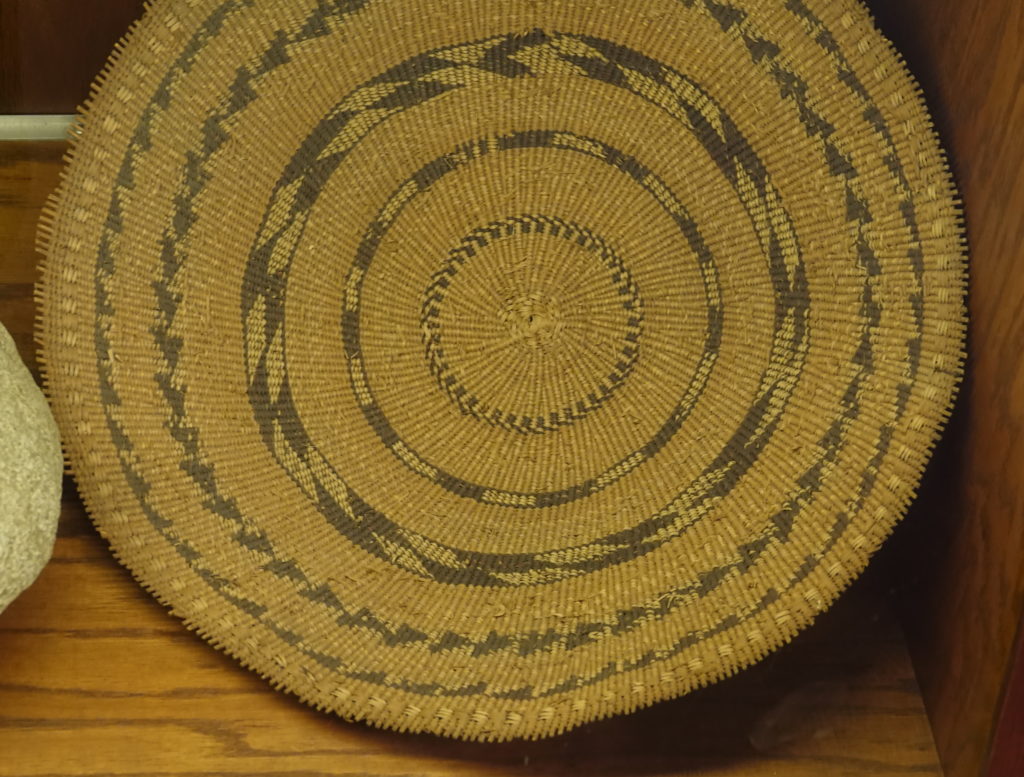
Young people today have no understanding of the cultural significance of this.
Aside from the flooding, the Soledad mission also suffered from hot summers, cold winters, and the usual fatal measles epidemics, and at its peak only had seven hundred Native American slaves. Mission San Antonio de Padua had almost twice that, but as it never had a town grow up around it, or even a ranch, it fell into ruin after secularization in the 1830s. By the late 1800, the “mission revival” school of architecture started to appear in California. One of the first buildings to be constructed in this style was a railway depot in Burlingame. The roof tiles in that building were pillaged from Mission San Antonio, so the mission revival style contributed to the revival of the missions by helping to destroy the original mission buildings.
The good news is that sometime in the 20th Century they put a new roof on the mission.

Right now the building needs an earthquake retrofit, and unless they can raise another few million dollars in the next year they will have to close it again. It’s a little hard to get to, as it is way off the expressway in the middle of a military base, but worth the effort. Visit now, as it may not be open much longer.
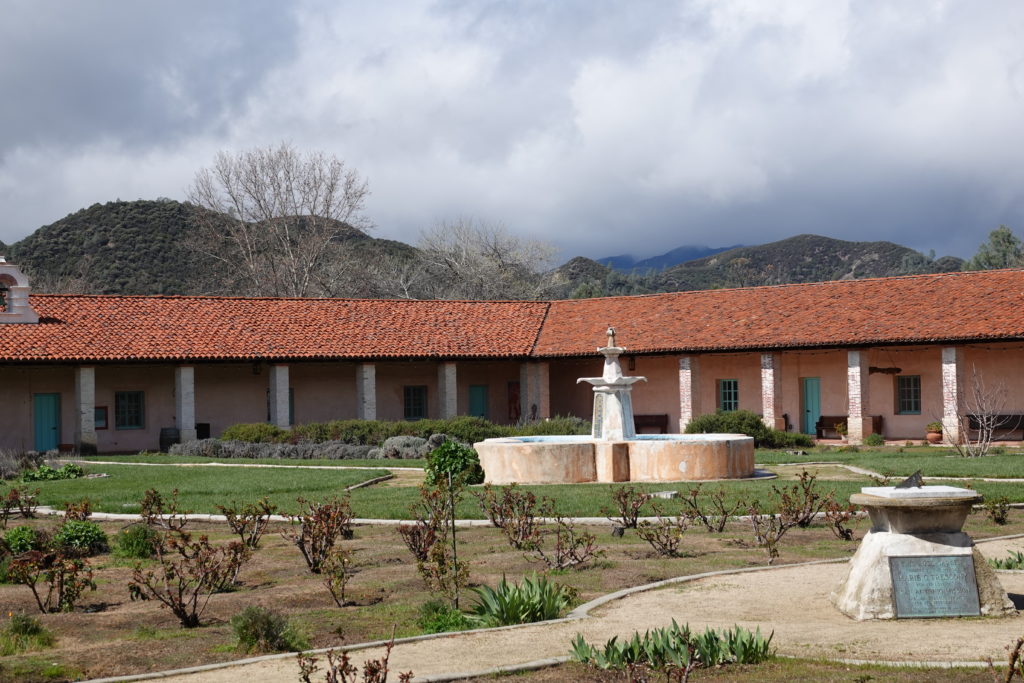
While we were exploring the walled rose garden, we disturbed a covey of California quail. That’s the state bird of California. Seriously? In a state that has everything from hummingbirds to condors, they pick a fat and stupid game bird as our state representative?
I blame the restaurant lobby.
Here’s the inside of the church.
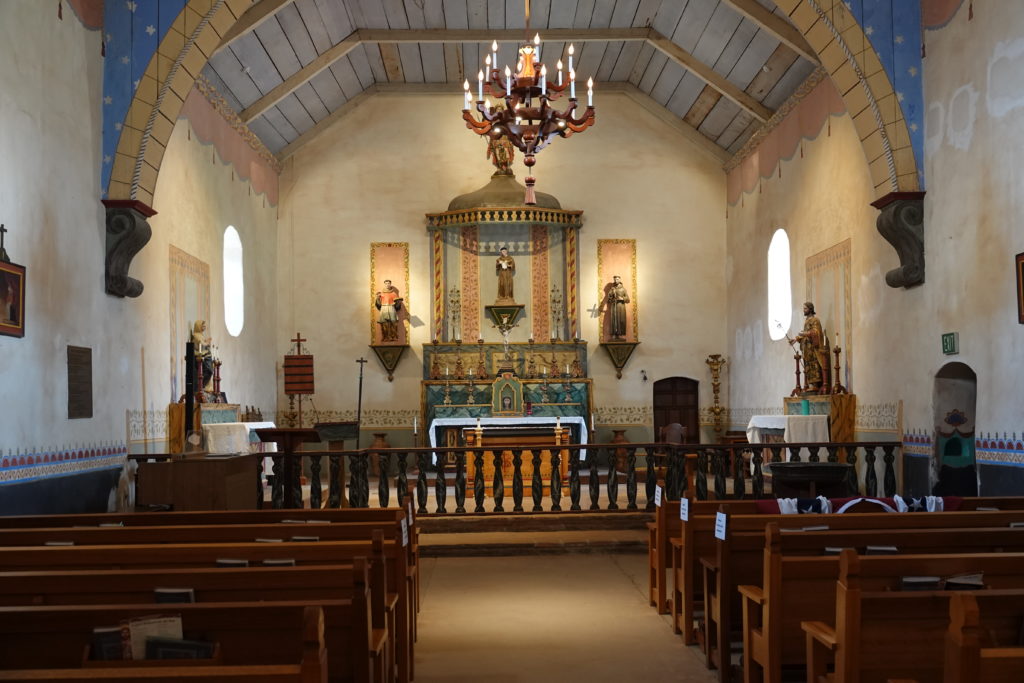
San Antonio is apparently the patron saint of store mannequins.

He also intercedes on behalf of artists who can’t get the hands quite right.
They also have a geode in the shape of the Virgin Mary.

To get the full effect you have to squint a bit, and drink a couple of bottles of communion wine.
Outside in the parking lot Paula was interested in the huge bird footprints in the mud. The mystery was solved when a trio of wild turkeys scuttled past.
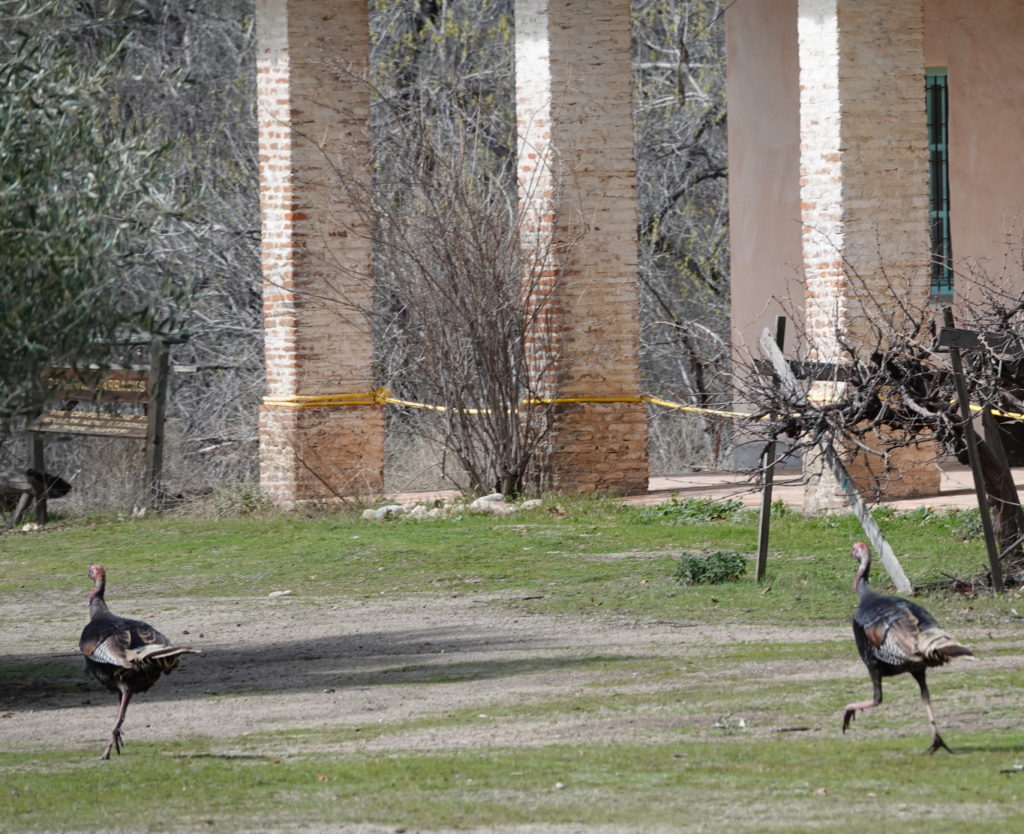
Finally, for no apparent reason, there are a couple of ships’ figureheads. You can make up your own story about this one.
